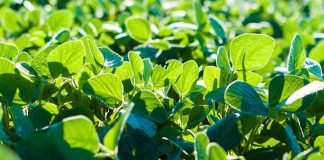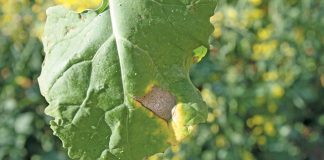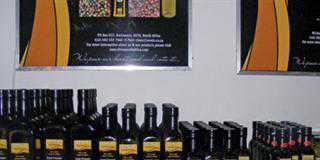Billed as one of the biggest jatropha plantations in world, the 12 000ha Inhassune plantation in Inhambane province’s Panda district is the sort of project on which war-ravaged Mozambique is pinning its hopes – it’s planted, cultivated, maintained and harvested by hand, providing work for hundreds of locals.
The plantation is part of a national strategy to minimise Mozambique’s dependence on imported oil, freeing up money that can be spent on social services instead. The country’s Minister of Science and Technology, Venancio Massingue, says Mozambique has the capacity to produce 21 million litres of ethanol and 40 million litres of biodiesel per year. To reach this goal, five million hectares have been put aside in the provinces of Inhambane, Zambezia, Nampula and Cabo Delgado.
After a tendering process, the Inhassune plantation was granted to the project’s British holding company, ESV Bio-Africa Lda. The massive swathe of land had previously been a cotton plantation owned by the parastatal Inveragro SARL, Mozambique, which has since shifted its focus to tourism. ESV Bio-Africa Lda is a member of the international ESV Group Plc, a global biofuel producer with extensive operations in the Ukraine, complete with its own port facilities in the Black Sea.
The directors of the Mozambican operation are Said Alikani and Sir Paul Howell. The managing director of the vast plantation, former Pretoria businessperson Renier van Rooyen, is a partner. The Mozambican partner is Cipriano Mutota of Maputo.
Getting started
Cotton production ended about 17 years ago on what today is the Inhassune plantation. The 5 000ha previously used for cotton had to be cleared of 15 years worth of bush. Again, manual labour was prioritised and the bush was cleared by hand. “We used about 300 locals,” Renier recalls. “We cleared the land at a rate of about 5ha to 10ha a day.”
Previously Renier’s main interests had been in planting trees for the forestry industry, where he and Gideon van der
Merwe, his co-founder in the company Polyfert, marketed the use of polymers for the retention of moisture and nutrients in silviculture. The company’s main client is Mondi in SA, but today Polyfert has clients in Brazil, Australia and China.
Renier’s fluent Portuguese, learned during his military days, and his experience in marketing and managing Polyfert’s international operations, made his link-up with ESV Bio-Africa Lda much easier. In December 2006, while Renier’s association with ESV was being finalised, he used to shuttle between Pretoria and Inhassune on a weekly basis. “This simply became too much,” Renier says, adding that after extensive investigations, and contemplation by a reluctant wife, the family, complete with three young daughters, decided to move to the Mozambican plantation earlier this year.
“We drove in with nothing, just a bakkie and a bag full of plans,” Renier says. He recalls the gigantic task of transforming the mass of bush into a productive agricultural operation.
Production
Today, a mere seven months later, almost 800ha have been planted with about 880 000 Jatropha curcus trees, while an on-farm nursery provides a further 520 000 seedlings. ”Previously we had to import all our seed from Malawi,” Renier says, “but at least now we’re harvesting our own seeds.” When the seeds arrived from Malawi, Renier planted 1kg of seed per cubic metre in a mix of polymer, soil, peat and bat guano, and waited about eight weeks while the seedlings grew out in the nursery.
After ripping furrows in 3m intervals, the seedlings were planted 3m apart in each furrow, resulting in about 1 100 seedlings per hectare. Since every tree had been planted with polymers, the survival rate was an astounding 98%. The climate didn’t hurt either, with normal minimum winter temperatures seldom dropping below 15°C, and with summer maximums often reaching 40°C and even 48°C with high humidity levels. Rainfall varies between a comfortable 800mm to 1 000mm per year.
As a result, the first crop was harvested only seven months after the first trees were planted. The international norm is around 17 months. Some trees delivered as much as 2kg of seed from 6kg of fruit. The target is to have 2 000ha under trees by December 2007, with planting normally taking place at a rate of 6ha to 8ha per day. Under favourable conditions the maximum planting rate is up to 15ha per day.
Labour comprises a permanent workforce of 500 locals. The bulk is made up of general workers. There is also a mechanical workshop with 17 workers, including a manager who oversees mechanics, tractor drivers, plumbers, carpenters, electricians and builders. This makes the farm largely self-sustaining – a priority when farming in a country where infrastructure is scarce and inputs hard to come by.
Farming supplies are mainly sourced in Mozambique, and the Mozambican government provides support where possible. Part of this support is the rock-bottom prices at which Renier manages to purchase his bakkies and trucks. “They can be up to R80 000 cheaper [than in SA],” Renier says. Fertiliser has to be imported from South Africa, and the fertiliser company he deals with transports it to him on a regular basis.
Currently, a bee project has been launched which will not only provide further employment, but will also be used to aid the pollination of the jatropha trees.
On-farm biofuel production
Presently the farm uses about 10 000 litres of diesel a month, despite its predominance of manual labour. This is budgeted as a constant amount, even during harvesting. By December this year Renier plans to have built a small on-farm refinery to press the oil from the jatropha seeds. The aim is to produce enough biodiesel for the farm, with the surplus being sold to PetroMoc, the Mozambican state-owned fuel company, which will then distribute it. PetroMoc will also market the farm’s biofuel. The plantation aims to break even financially around 2010.
Managing labour
“All our employees are skilled, enthusiastic and prepared to learn,” Renier says. “And they do so rapidly and with pride.” The 500 general workers are divided into sections of 10, and each section reports to a senior official. They, in turn, report to a manager. Top management includes a nursery foreman and an administrator. “I run the operation along military lines,” Renier says.
Each morning at dawn all the workers attend the daily start-up meeting. They will work an eight-hour day and generally have enough time to spend on their own farming, often using the plantations equipment. The plantation has also appointed a full-time stock manager to oversee its Brahman herd, used to graze between the jatropha trees, combat bush encroachment and provide manure as fertiliser. The dipping facilities have also been made available for the use of locals.
Once they’ve worked for 3 months, staff are considered permanent. The farm’s labour requirement is calculated at one worker per 2ha, and more labour will be needed as the plantation expands. The plantation is already one of the biggest employers in the Inhambane province, in a country where work is hard to come by. “Every Monday at my office door there are about 700 people asking for work,” Renier says.
“People want quality of life, and they realise work will give it to them. While I can’t hire anymore people at the moment, this changes with every second hectare of land we prepare, for which we need another worker. By the end of the year I’m hoping to acquire an additional 700 to 800 workers.”













